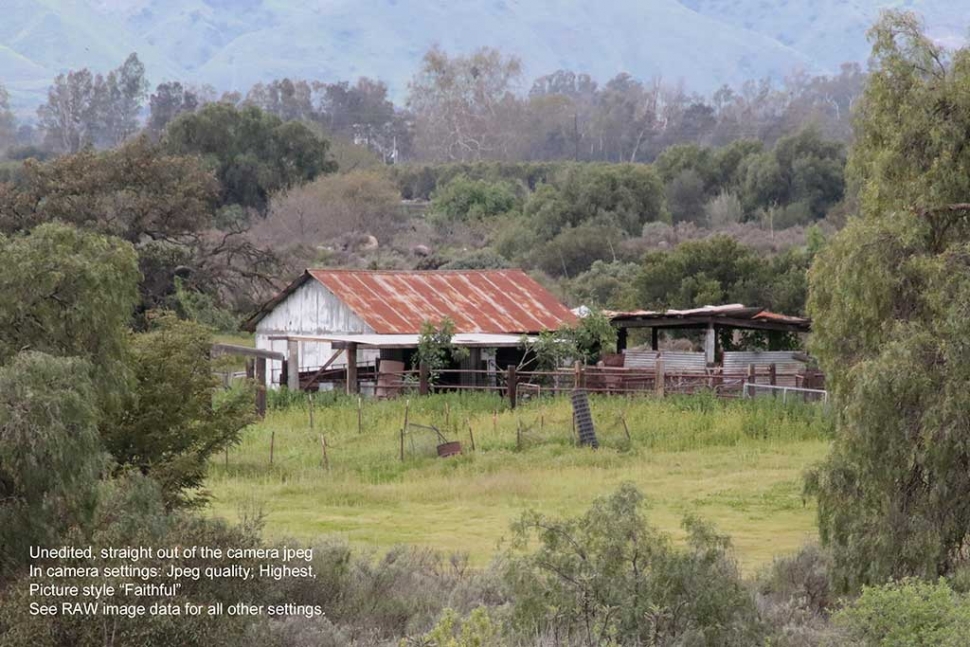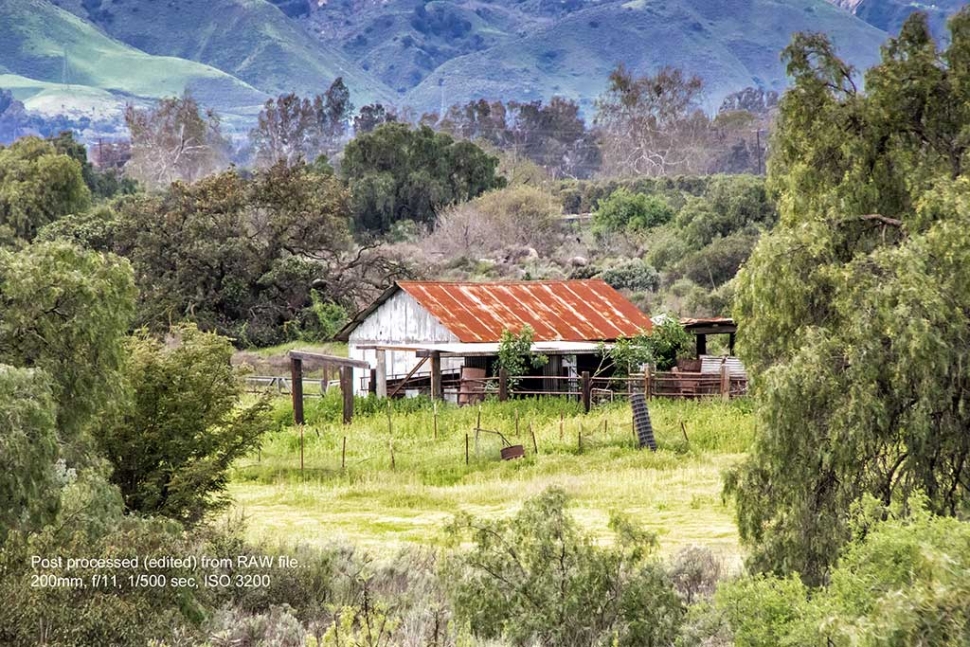|
Photography Know-How
By Bob Crum — Wednesday, March 1st, 2017
SOOC Jpegs...
 Bob Crum  Two photos for comparison. A straight out of the camera unedited jpeg and my processed/edited RAW version of the same scene.  Pardon me, again. The plan was to discuss lenses this week. However, recall my discussion last week about editing the Photo of the Week? That got an interesting response that you might find interesting. Everybody knows that cameras, and cell phones, universally generate jpeg photos. Accordingly, there's a group of straight-out-of-camera (SOOC) jpeg shooters. Their creed prohibits tweaking or manipulating photos in any manner out of the camera. One of them took me to the proverbial wood shed. I'll call him Tasker. Tasker said: If you got it right in the camera in the first place, you wouldn't have to twiddle and piddle afterward. Well, Sir, I would if I knew how! (I hate confessions.) Of course some things are best done in camera. Proper exposure is always good. Also focus because it can't be fixed in post processing. I know that for a fact but don't ask why I know it. The technology of modern-day cameras, and many cell phones, is so good that they're capable of producing some pretty good jpeg photos. But jpegs straight-out-of-camera are not without inherent limitations. For example, in the process of generating a jpeg, the camera compresses the image file by discarding a percentage of image data. Nevertheless, the compressed, lower resolution 72ppi image is necessary for email and the Internet. Conversely, other purposes for photos require a higher resolution. While a 72ppi (or 96ppi) jpeg is best for the Internet, it's woefully insufficient for most publications. Photo resolution of 200ppi is required of me for newspaper printing, 300ppi for magazines. Many of my other clients also require 300ppi images at specific dimensions. This means I need the 300ppi RAW file from my Canon 7DMKII camera at the outset. Technically, a RAW image simply converted before editing looks worse than a jpeg straight out of the camera. But after processing/editing, an entirely different image emerges. After initial editing, I export the processed photo to either Photoshop or Photoshop Elements for additional polish and resizing as needed. Then, the finished high resolution photos that I submit to a client, or for publication, are finalized in the... ahem... ready?... jpeg file format. But my jpegs are quite different than any straight-out-of-the-camera jpegs. (see accompanying comparison photos) All photographers are entitled to do as they please, but I have one other niggly issue with straight of the camera jpegs. Aside from content and composition, SOOC photos, in my opinion, are boring. Look at a bunch of jpegs straight-out-of-camera side by side and they all seem to have the same bland same-old look. Besides adjusting for exposure, the camera does all the processing so photographer creativity is virtually non-existent. Bland is the norm! Forget bland. Obviously, millions of readers of this column, like you, are interested in taking photography to a higher level. So, even if you only intend to deal with SOOC jpegs (for now), you can still improve your photographs by post processing (editing). You don't have to be satisfied with mediocre photos. I leave Tasker this thought: Even though I get it right in the camera, a camera merely generates a data file... I create the image. The RAW file that the camera gives me is the canvas upon which I create my photographic art! That's why, as a photographer, post processing (editing) is not only an extension of my creativity, it's a joy... not a woe to be shunned. Try it, you too might like it. Happy shooting. Email comments, suggestions or questions to: bob@fillmoregazette.com |
